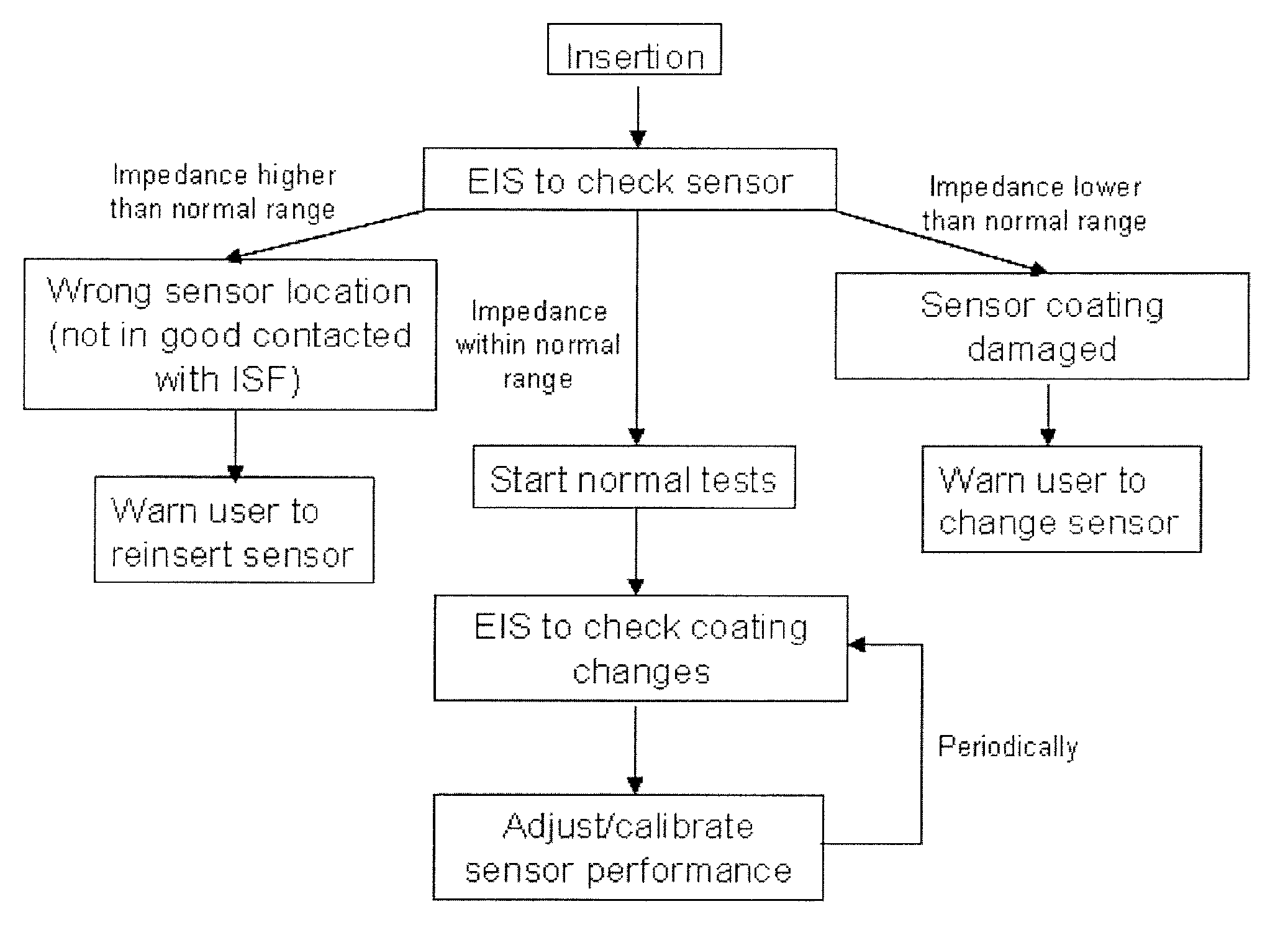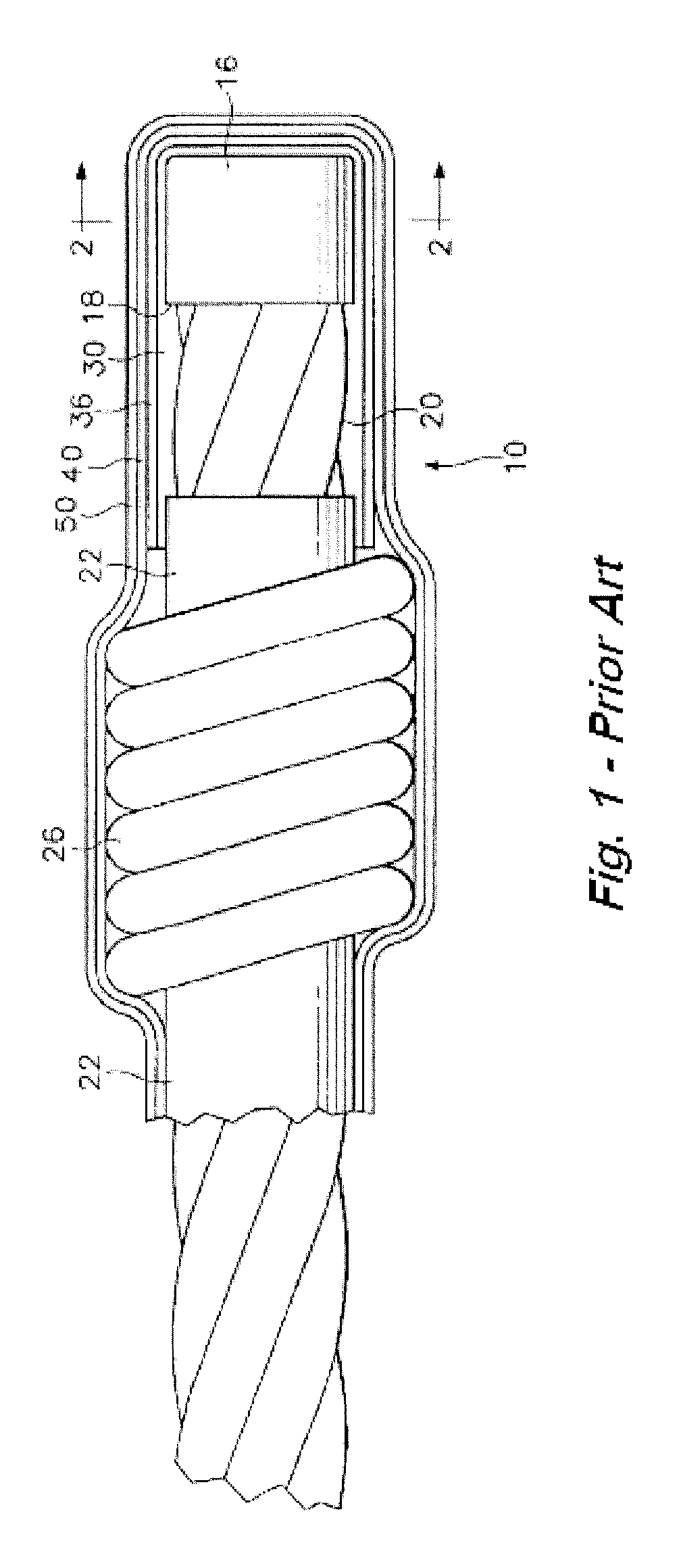Electrochemical impedance spectroscopy enabled continuous glucose monitoring sensor system
a technology of electronic impedance spectroscopy and sensor system, applied in the field of electrochemical impedance spectroscopy enabled continuous glucose monitoring sensor system, can solve the problems of insufficient insulin production of individuals affected by diabetes, no cure, and inability to respond to the insulin they produ
- Summary
- Abstract
- Description
- Claims
- Application Information
AI Technical Summary
Benefits of technology
Problems solved by technology
Method used
Image
Examples
Embodiment Construction
[0026]Certain preferred embodiments of the electrochemical impedance spectroscopy enabled continuous glucose monitoring sensor system and method are disclosed below in accordance with the present invention.
[0027]As discussed above, it is presently difficult to assess sensor viability of a CGM or other sensor types after insertion in the human body. This is generally caused by at least three issues, including damage to the sensor membrane during insertion, adverse biological reactions on the sensor within the body, and pistoning (movement) of the sensor in vivo. The present invention provides an electrochemical impedance spectroscopy enabled continuous monitoring sensor system and method to monitor viability and effectively evaluate and correct any disturbances in sensor accuracy, particularly for CGM sensor systems. Specifically, electrochemical impedance spectroscopy (EIS) is able to detect changes to the glucose sensor's accuracy as they occur, and thereby either warn the user of ...
PUM
 Login to View More
Login to View More Abstract
Description
Claims
Application Information
 Login to View More
Login to View More - R&D
- Intellectual Property
- Life Sciences
- Materials
- Tech Scout
- Unparalleled Data Quality
- Higher Quality Content
- 60% Fewer Hallucinations
Browse by: Latest US Patents, China's latest patents, Technical Efficacy Thesaurus, Application Domain, Technology Topic, Popular Technical Reports.
© 2025 PatSnap. All rights reserved.Legal|Privacy policy|Modern Slavery Act Transparency Statement|Sitemap|About US| Contact US: help@patsnap.com



